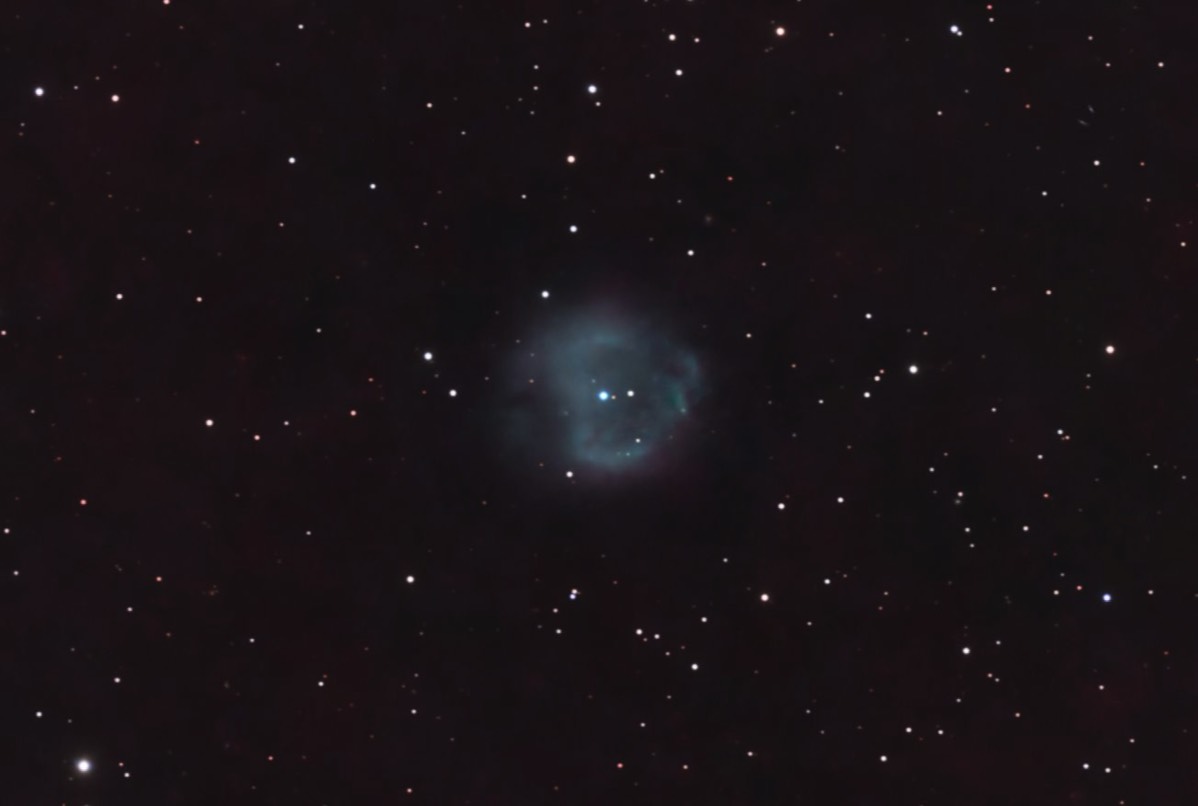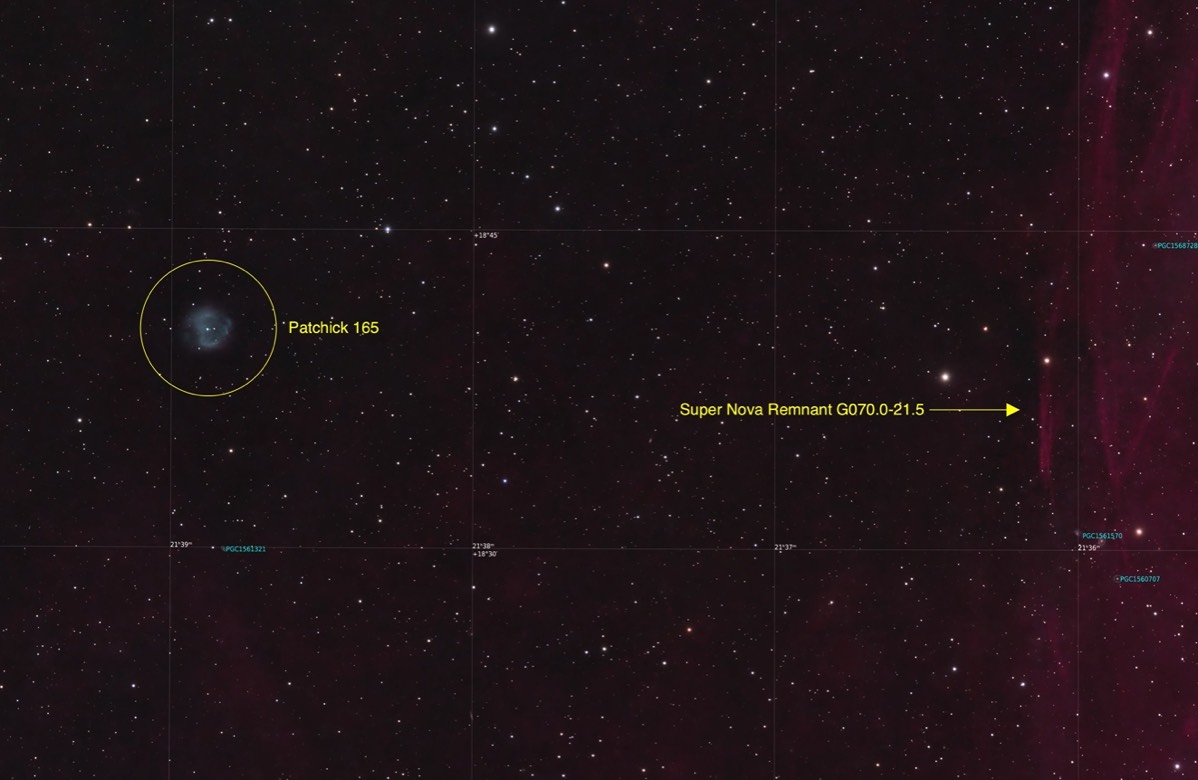"Likely" Planetary Nebula Patchick 165 and a supernova remnant
Published 18 October 2023
Crop of Patchick 165 taken with a Stellarvue SVX 152 refractor RGBHOO (click image for the full field of view)
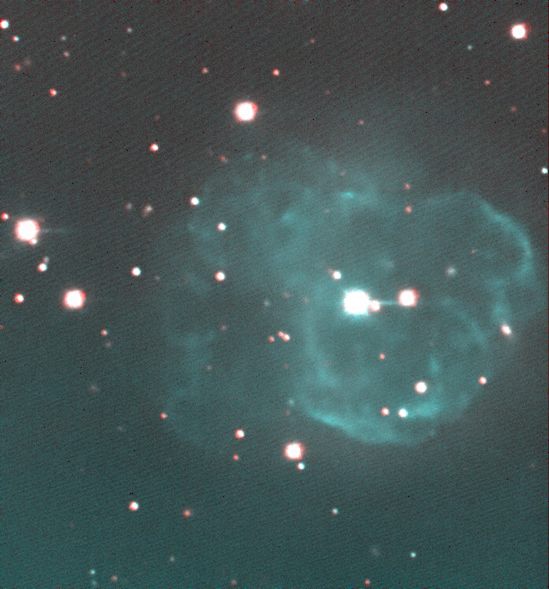
Original verification mage taken with the 4m Mayall Telescope on Kitt Peak August 17-18, 2017, courtesy of Matthias Kronberger, Dianne Harmer and George Jacoby (NOIRLab)
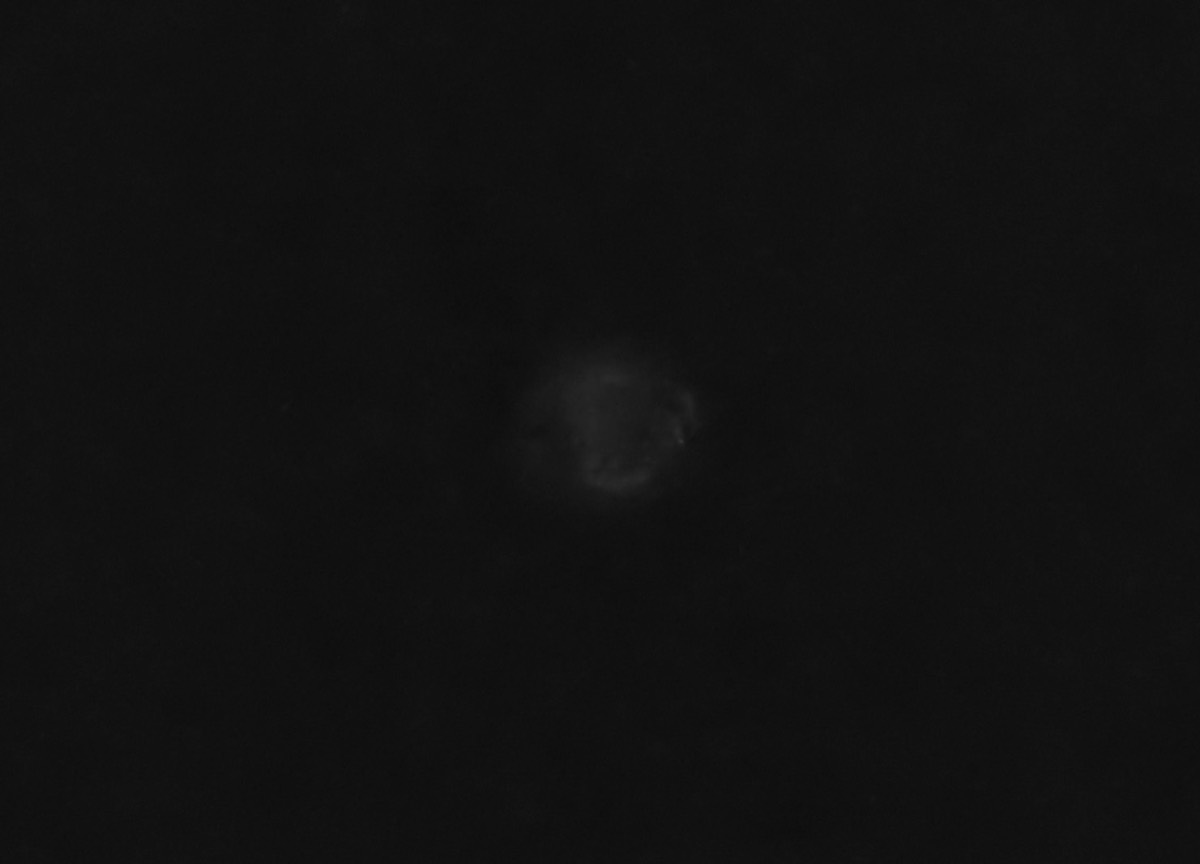
OIII image taken with the Stellarvue SVX 152 APO refractor (19hrs)
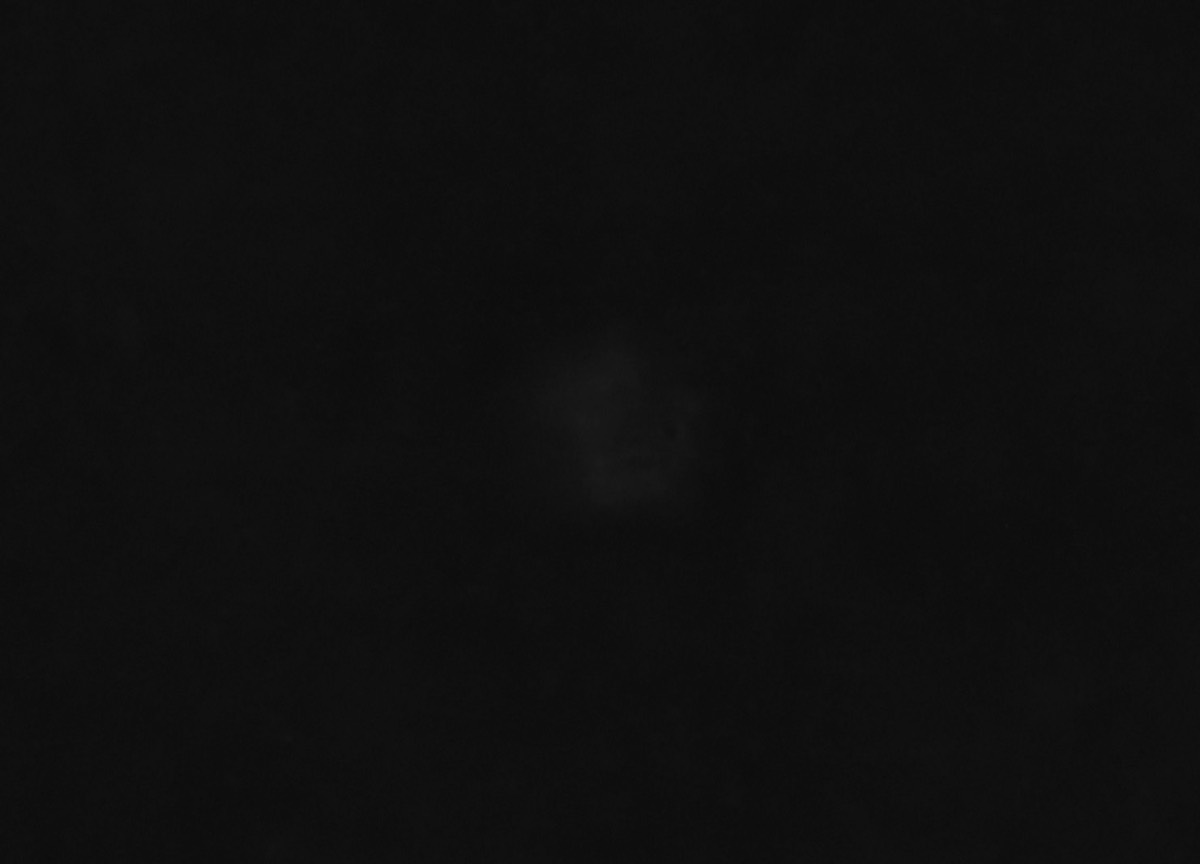
Ha image taken with the Stellarvue SVX 152T APO refractor (20hrs)
Annotated image crop showing Patchick 165 in relation to the super nova remnant G070.0-21.5 (Click the annotated image for the full field of view)
About this object
Patchick 165 (PA165) is a small (3.1 arc min) and very faint "likely" planetary nebula in the constellation Pegasus. It was discovered by amateur planetary nebula hunter Dana Patchick on November 4, 2016. A year later, on August 17-18, the candidate was imaged by the 4 meter Mayall telescope on Kitt Peak (See attached image above). The kit peak image confirmed the possibility of a planetary nebula and the object was upgraded to "Likely Planetary Nebula" in the HASH database. The Kitt Peak images shows a neat filamentary structure with many loops.
The top image is a crop of a much larger field of view and is the first amateur image of this object that I know of. PA165 is extremely faint and nearly 20hrs of data in the Hydrogen Alpha band (Ha) and 19hrs in Oxygen III (OIII) were needed just to show it here. As can be seen on the attached Ha and OIII images, the object show more detail and is more prominent in OIII. OIII has the color of bluish/green and can be mainly seen in the color image on top. There are the telltale signs of Ha along the edges shown in Red. Very close to PA 165 is the huge Super Nova Remnant G070.0-21.5 (see the full frame image). It lies 39 arc minutes to the west. The super nova remnant shows the tell tale signs of red Ha emission. Within the background of the image are faint clouds of Ha emission and dust. Also, several faint galaxies appear across the image and many faint uncatalogued ones. PA 165 is located at RA 21 38 53.579, DEC +18 40 11.13
Patchick 165 (PA165) is a small (3.1 arc min) and very faint "likely" planetary nebula in the constellation Pegasus. It was discovered by amateur planetary nebula hunter Dana Patchick on November 4, 2016. A year later, on August 17-18, the candidate was imaged by the 4 meter Mayall telescope on Kitt Peak (See attached image above). The kit peak image confirmed the possibility of a planetary nebula and the object was upgraded to "Likely Planetary Nebula" in the HASH database. The Kitt Peak images shows a neat filamentary structure with many loops.
The top image is a crop of a much larger field of view and is the first amateur image of this object that I know of. PA165 is extremely faint and nearly 20hrs of data in the Hydrogen Alpha band (Ha) and 19hrs in Oxygen III (OIII) were needed just to show it here. As can be seen on the attached Ha and OIII images, the object show more detail and is more prominent in OIII. OIII has the color of bluish/green and can be mainly seen in the color image on top. There are the telltale signs of Ha along the edges shown in Red. Very close to PA 165 is the huge Super Nova Remnant G070.0-21.5 (see the full frame image). It lies 39 arc minutes to the west. The super nova remnant shows the tell tale signs of red Ha emission. Within the background of the image are faint clouds of Ha emission and dust. Also, several faint galaxies appear across the image and many faint uncatalogued ones. PA 165 is located at RA 21 38 53.579, DEC +18 40 11.13
Image Details
- Optics : Stellarvue SVX 152T refractor @f8 1200mm FL
- Mount: Paramount MYT
- Camera: ZWO ASI6200
- Filters: Chroma 50mm RGB and 5nm OIII, Astrodon 5nm Ha
- Exposure (min): RGBHO 110:96:98:1200:1140 which is a total of 44 hrs, 2x2 binning
- Automation Control: The Sky X, Voyager, PrimaluceLab Eagle 4pro
- Guiding: StarlightXpress Lodestar X2
- Processing Software: PixInsight, PS CC
- Location: Stark Bayou Observatory, Ocean Springs, MS
- Sky: Typical SQM 19.3-20.1, Bortle 5, Suburban
- Date: 28 July - 22 Aug 23





